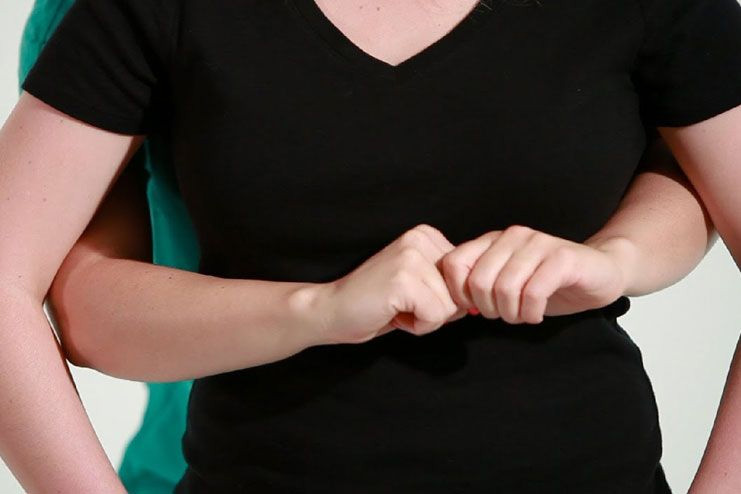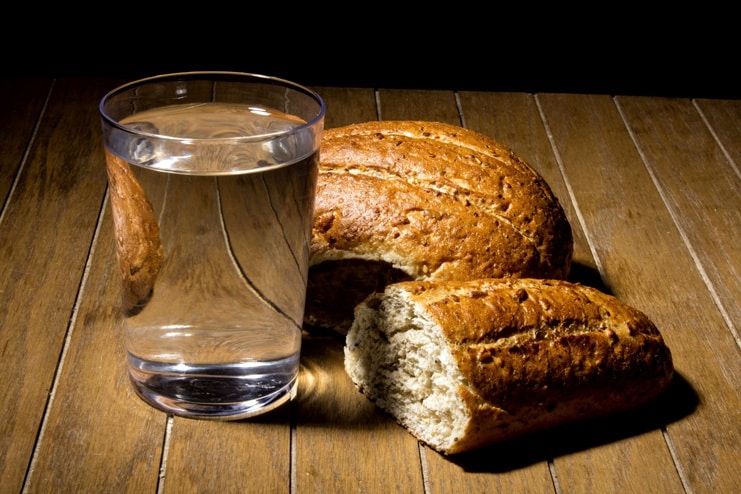Affiliate Disclaimer
Some links in this article are affiliate links. We may earn a small commission if you make a purchase through these links, at no extra cost to you. We only recommend products we find useful to our readersMost people have experienced the frequent and frequently upsetting issue of food becoming caught in their throats at some point. This problem may be caused by eating quickly, not chewing food well enough, or consuming certain foods more likely to become stuck in the teeth. When food gets lodged in the throat, it can cause pain, nervousness, and even fear, especially if breathing becomes difficult. Taking care of this problem immediately is imperative for comfort and safety. To avoid major issues, treat a clogged throat right away. Significant health hazards associated with blocked throats include choking and airway obstruction. Additionally, taking quick action might reduce the stress and suffering brought on by food getting trapped in the throat. This article will provide a thorough guide to treating this frequent problem by outlining 12 efficient ways to remove food from the throat.
Immediate actions are taken if food gets stuck in the throat
1. Swallowing Liquids

Sipping water is one of the most straightforward and helpful things to do if food becomes lodged in your throat. If food is stuck in your stomach, drinking water or other fluids can help push it down. It is easier for the food to move down your throat when you have the liquid because it serves as a lubricant against the meal.
To get started, take a few swallows of water and see whether the food starts moving around. If water alone is ineffective, be sure to experiment with various liquids, such as warm tea or fizzy beverages. Carbonated drinks include bubbles that can assist in the digestion of food, making it more straightforward to swallow by breaking it down. Caution should be exercised to avoid eating large quantities of liquid too rapidly, as this may result in pain or perhaps make the obstruction worse.
You can frequently address the issue quickly by drinking calmly and leisurely. It will restore comfort and minimize potential problems that are linked to having a clogged throat.
2. Coughing

Coughing is a natural reaction that can be very helpful in terms of removing food that has become lodged in your throat. When you cough strongly, the abrupt surge of air pressure can forcefully expel the food from your airway or reposition it to a place where you can swallow it more readily. When you feel that the food partially obstructs your throat and has not clogged your airway, this method is beneficial because it allows you to breathe more easily.
To use this method, you should first take a deep breath and then cough forcefully, aiming to produce as much force as you possibly can. If necessary, repeat this process multiple times. If the initial coughs are unsuccessful, you should relax and take another long breath before coughing again. This procedure may assist in clearing your throat and preventing the condition from developing into a more severe obstruction.
Coughing is a rapid and instantaneous response that can frequently address the issue without the need for extra intervention. It will allow you to breathe and swallow again without any discomfort.
3. Using Gravity

Another efficient method for removing food that has become lodged in your throat is to use gravity. By shifting your body position, you can naturally assist the food in traveling downhill when it is being consumed. Leaning forward or hopping up and down are two straightforward strategies that might be utilized.
The first step in using the jumping method is standing up straight and performing controlled jumps of a small size. A jolting action can assist in shifting the food and allowing it to go down your esophagus, which can be beneficial. Take care not to leap too vigorously to prevent getting hurt or experiencing further discomfort.
You could also lean forward to take advantage of gravity. With your head and upper body hanging down, bend at the waist and let your body hang down. By adopting this position, you can facilitate food movement from the back of your throat to the stomach for better digestion.
Having food stuck in your throat can be painful and potentially hazardous. Both of these methods rely on the natural force of gravity to help clear the obstruction, providing a quick and uncomplicated solution to the problem.
4. Eating a Banana

Biting into a banana is a gentle and effective method for removing food that has become lodged in your throat. The soft, smooth texture of a banana can function as a natural lubricant, which can assist in moving the food that is causing obstructions down into your stomach. Bananas are a safe alternative because they are simple to swallow and have a low likelihood of causing subsequent choking accidents.12 Tips for Easing Food Blockage in Your Throat
The first step in utilizing this technique is to take a tiny bite of a ripe banana and chew it thoroughly. To achieve a smooth, mash-like consistency that can easily glide down your throat, the idea is to generate a smooth consistency. When you swallow the banana, it may assist in carrying the food that has become trapped along with it, thereby removing the obstruction.
This approach uses bananas’ natural characteristics to make swallowing easier. It might be especially helpful if you discover that drinking liquids alone is not sufficient to alleviate your breathing difficulties. This straightforward and easily accessible treatment can rapidly regain your comfort and ensure that your throat is clear.
5. Drinking Carbonated Beverages

Consuming fizzy beverages is surprising and efficient in alleviating the discomfort of having food lodged in your throat. When you drink carbonated beverages, the carbonation causes bubbles to form, which can assist in breaking down the food you are eating, making it more straightforward to swallow, or helping it to flow along your esophagus.
When utilizing this method, it is recommended that you use a carbonated beverage, such as soda water, sparkling water, or cola. Please take a few sips of the beverage and let the bubbles work their magic on the food that has become trapped. The carbonation’s effervescence may assist in softening and dissolving the obstruction, making it easier for it to pass through your throat.
What happens if you frequently get acid reflux or other digestive issues? In that case, it is essential to note that carbonated beverages, despite their benefits, should be drunk in moderation. It would help if you also chose sugar-free foods to prevent consuming excessive calories and possibly experiencing discomfort.
Suppose you include carbonated beverages to treat a clogged throat. In that case, you will be able to use the distinctive qualities of these beverages to remedy the situation in a timely and very efficient manner.
6. Honey

Honey, due to its inherent viscosity and calming characteristics, may be an effective cure for removing food lodged in the throat. Its silky texture can coat the throat, providing lubrication that assists in transporting food, clogging the esophagus during swallowing.
To alleviate a clogged throat, take a spoonful of honey and slowly allow it to coat the back of your throat. It should be swallowed gently so that it can interact with the food that has become trapped and provide assistance for its movement. Honey’s sticky consistency can aid in dislodging food and enabling it to slide into your stomach after being brought down.
Furthermore, honey possesses antibacterial qualities, which may be of assistance in preventing infections or irritations in the throat regions. Be wary, however, if you have diabetes or are trying to limit the amount of sugar you consume, as honey contains a significant amount of natural sugars.
Incorporating honey into your plan for coping with a stuck throat can be a delicious and effective solution to this uncomfortable issue.
7. Performing the Heimlich Maneuver

The Heimlich maneuver is a well-known and life-saving method for removing food or other objects lodged in the throat. Abdominal thrusts generate pressure that can clear the obstruction from the airway.
To apply the Heimlich technique to yourself:
- One hand should be made into a fist and held just over the navel.
- Take hold of your fist with the other hand and quickly push it upward and inward.
- Continue pushing until the object is gone or your breathing returns to normal.
To execute the Heimlich maneuver on someone else:
- Arms around the person’s waist, standing behind them.
- One hand should be made into a fist and held just over the navel.
- Take hold of your fist with the other hand and quickly push it upward and inward.
- Continue pushing until the thing is gone, or they can breathe properly.
Executing the Heimlich technique swiftly and confidently is imperative to maximizing the likelihood of successfully clearing the airway.CPR might be required if the person loses consciousness until medical assistance comes.

8. Stretching the Neck

One easy yet very useful way to help get food trapped in the throat is to stretch the neck. By leaning your head back, you can make it easier for food to pass down into the esophagus.
To extend your neck:
- Maintain a straight back and choose a comfortable position to sit or stand.
- With your chin pointing toward the ceiling, slowly tilt your head back.
- Allow gravity to help the food descend by holding this stance for a short while.
- If it’s comfortable for you, softly swallow to help the food go down your throat.
Take care not to tilt your head back too much, as this may lead to neck muscle soreness or tension. Additionally, stop using this technique and try other ways to remove the obstruction if you feel pain or swallowing difficulties.
Neck stretching is a simple, gentle technique that might be especially useful if the trapped food is further up in the throat. This technique can help the food obstructing your throat.
9. Bread and Water

A time-tested and successful remedy for loosening food particles lodged in the throat is to use bread soaked in water. The bread’s soft texture and the water’s lubricating qualities can facilitate the food blockage’s clearance.
Use these steps to apply this method:
- Soak a tiny slice of bread in water until it gets mushy and soft.
- Chew every mouthful of the moistened bread that you take.
- The bread may aid in forcing the food to lodge in your stomach as you ingest it.
The moistness of the water and the soft bread texture might smooth the passage for the food that has become trapped. This method comes in handy when other procedures fail to remove more extensive or obstinate impediments.
Remember that chewing the bread well is necessary to prevent choking and the formation of new blockages. Add some bread and water to your repertoire of remedies for a clogged throat to offer a straightforward but efficient way to ease this bothersome condition.
10. Olive Oil

Not only is olive oil known for its many health advantages and versatility in the kitchen, but it can also be an effective treatment for food lodged in the throat. Its slick, smooth texture is a natural lubricant, facilitating the food blockage’s descent down the throat.
To utilize olive oil for this, take the following actions:
- Take a spoonful or a tiny sip of olive oil.
- Olive oil should be swallowed gradually so that it coats the throat.
- Thanks to olive oil’s lubricating properties, food may become loose and pass more easily into the stomach.
Olive oil is a natural, soothing remedy that can be very helpful for people who are uncomfortable or irritated by a clogged throat. Furthermore, its anti-inflammatory qualities might help reduce any throat discomfort or inflammation brought on by the obstruction. To relieve pain and facilitate easy passage of the food blockage, include olive oil in your clogged throat treatment plan.
11. Waiting It Out

A situation in which food is caught in the throat can be resolved by merely waiting a few minutes. In certain circumstances, this may be all that is required. The body’s natural reflexes and movements may finally be able to dislodge a small bit of food that has become trapped.
It is necessary to maintain composure and refrain from panicking during this period. Exercises that focus on relaxing the breath help reduce feelings of worry and discomfort. A further method that can assist in moistening the throat and facilitating the passage of food that has become lodged is to drink water or other liquids.
However, if you continue to have chest pain, trouble breathing, or increased discomfort, you should not hesitate to seek any medical assistance as soon as possible. In situations where there are only minor blockages, waiting it out may be a possibility; nonetheless, putting your safety and mental health ahead of everything else is of the utmost importance. If the condition does not improve or worsens, be bold and seek the assistance of a specialist.
12. Medical Assistance
When food gets trapped in the throat, seeking professional medical attention may occasionally be necessary, mainly if home cures haven’t worked or if there are alarming symptoms.
Get medical help if:
- Attempts to remove the impediment using a variety of techniques are unsuccessful.
- You feel as though your chest is tightening, breathing is difficult, or you are in excruciating pain.
- There is continuous wheezing, choking, or coughing.
- You become aware of any evidence of blood or damage to the throat.
- The affected person cannot breathe or speak.
If you have any of these symptoms, get medical attention immediately. For assessment and treatment, go to the closest emergency room or call emergency medical services immediately.
Always remember to be cautious when handling a potentially severe issue such as a blocked throat. Prompt medical intervention can ensure the optimum result and avoid problems.
Conclusion
We have looked at twelve practical ways to get food caught in the throat to come loose. There are several ways to deal with this frequent issue, ranging from bare acts like coughing and swallowing drinks to more complex methods like neck stretches and the Heimlich maneuver. These skills are essential for comfort and safety, particularly in an emergency.
-
Aug 2020Written by Somapika D
-
Aug 2024Updated by Ankita
In this Article















